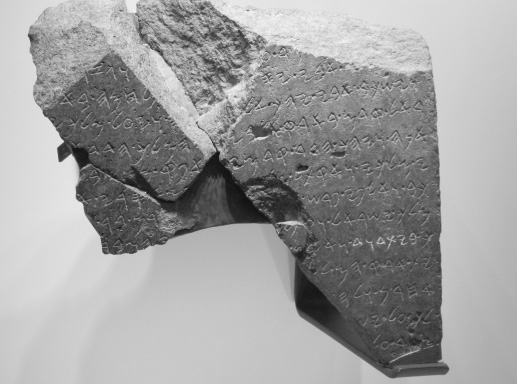This basalt stone stele is actually three fragments of a stele. It dates from the 800s B.C.E. Discovered in 1993 by archaeologists working in northern Israel, the Aramaic writing on the slab describes conflict between Hazael, King of Aram, King Joram of Israel, and King Ahaziah of Judah. In part, the stele describes Hazael’s hand in the downfall of the House of David. II Kings 8 seems to confirm at least part of this with a description of a conversation between the prophet Elisha and Hazael: “Then the man of God wept. Hazael asked, ‘Why does my lord weep?’ He answered, ‘Because I know the evil that you will do to the people of Israel; you will set their fortresses on fire, you will kill their young men with the sword, dash in pieces their little ones, and rip up their pregnant women.’” (NRSV, II Kings 8:12) Later, Elisha’s prophecy is confirmed: “The anger of the LORD was kindled against Israel, so that he gave them repeatedly into the hand of King Hazael of Aram, then into the hand of Ben-hadad son of Hazael.” (NRSV, II Kings 13:3) Today, the Tel Dan Stele is part of the collection at the Israel Museum in Jerusalem.


